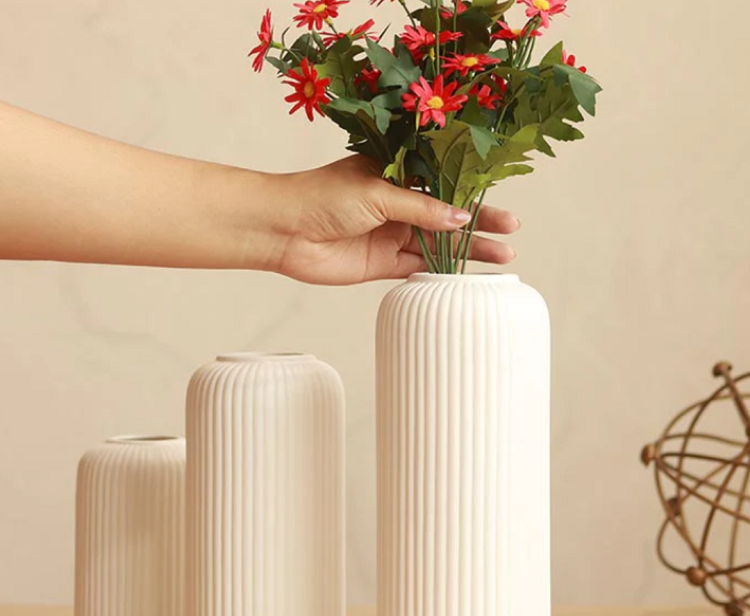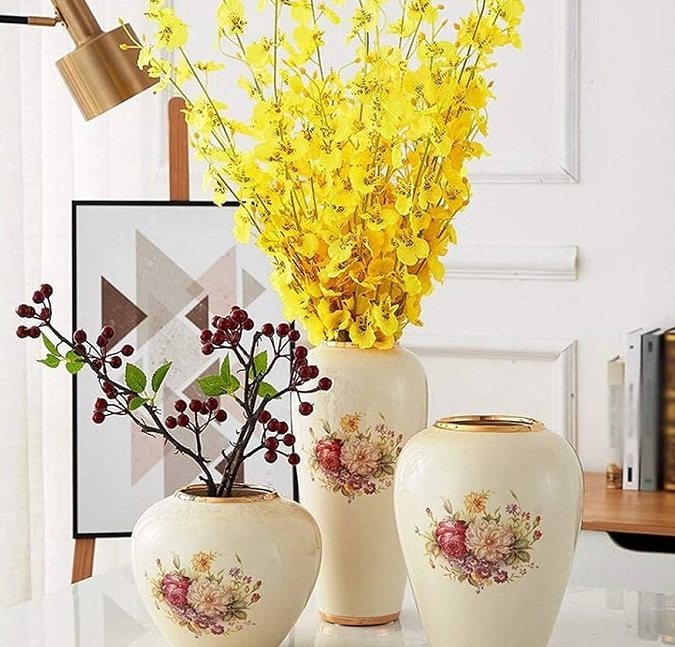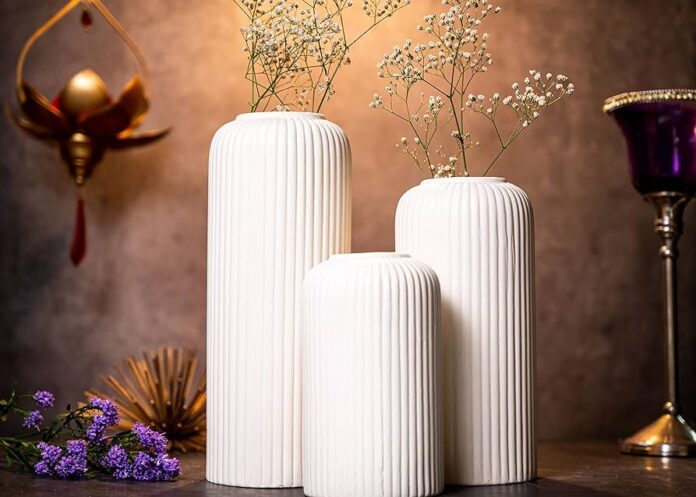Introduction
Vasele, often simply referred to as vases, are versatile containers typically used for holding flowers, but their purpose extends far beyond this basic function. These beautiful vessels have been a part of human culture for centuries, serving both decorative and practical roles. They can be crafted from various materials, including ceramics, glass, metal, and wood, each offering unique aesthetic and functional qualities.
What is Vasele?

Vasele holds significant cultural importance across the globe. In Japan, the art of ikebana (flower arranging) places great emphasis on the choice of vase, considering it an integral part of the arrangement. In Western cultures, they are often central to interior decor, adding elegance and sophistication to spaces. Understanding the cultural context of it helps appreciate their diverse forms and uses.
Historical Background
The history of it dates back to ancient civilizations, where they were used not only as household items but also as art pieces and status symbols. In ancient Greece, it depicted mythological scenes and daily life, while in China, porcelain vases became renowned for their intricate designs and exquisite craftsmanship. The evolution of vasele over the centuries reflects changes in artistic styles, cultural influences, and technological advancements.
Types of Vasele
Traditional
They often feature classic shapes and designs passed down through generations. These include Greek amphoras, Chinese porcelain vases, and Roman glass vases. They are valued for their historical significance and timeless beauty.
Modern
They embrace contemporary designs, focusing on simplicity and functionality. These vases often feature sleek lines, geometric shapes, and minimalist aesthetics, making them perfect for modern home decor.
Artistic
They are unique creations by artists who use vases as a canvas for their creativity. These pieces can range from abstract designs to detailed, hand-painted scenes, and are often considered collectible art.
Materials Used in Making
Ceramic Vasele
They are made from clay that is shaped and then fired in a kiln. They can be glazed for a glossy finish or left unglazed for a rustic look. Ceramic vases are popular for their durability and wide range of styles.
Glass Vasele
They are crafted through blowing or molding techniques. They can be clear or colored and often feature intricate designs. Glass vases are prized for their elegance and ability to enhance the beauty of flowers.
Metal Vasele
They are made from materials like brass, copper, and aluminum, offer a sturdy and often luxurious option. They can be polished for a shiny finish or aged for a vintage look.
Wooden Vasele
They are carved from solid wood or assembled from wooden pieces. They bring a natural, earthy feel to any decor and can be finished in various ways to highlight the wood’s grain and texture.
The Crafting Process of Vasele
Designing Vasele
The process of creating it begins with a design concept. Artists and craftsmen sketch their ideas, considering the shape, size, and decorative elements that will make the vase unique.
Molding and Shaping
Once the design is finalized, the material is shaped into the desired form. This can involve throwing clay on a pottery wheel, blowing molten glass, or casting metal. Precision and skill are crucial at this stage to ensure the it takes on the intended shape.
Decorating Techniques
After the basic shape is formed, decorative techniques such as painting, glazing, etching, and carving are applied. These techniques add visual interest and can range from simple patterns to elaborate designs.
Uses of Vasele
Decorative Purposes
One of the most common uses of it is for decoration. A beautifully crafted vase can enhance the aesthetic appeal of any room, serving as a focal point or complementing other decor elements.
Functional Uses
Beyond decoration, it is also functional. They can hold flowers, serve as containers for various items, or even be used in religious and ceremonial contexts.
Vasele in Art
It have long been a medium for artistic expression. From ancient pottery to contemporary art pieces, vases have been used to convey stories, emotions, and cultural values.
Caring for Your Vasele
Cleaning Methods
Proper cleaning is essential to maintain the beauty of it. For ceramic and glass vases, warm soapy water and a soft cloth usually suffice. Metal and wooden vases may require specialized cleaning products to avoid damage.
Maintenance Tips
To keep in good condition, avoid exposing them to extreme temperatures and handle them with care to prevent chips and cracks. Regular dusting and polishing can also help maintain their appearance.
Repairing Damaged Vasele
If it gets damaged, there are ways to repair it. Ceramic and glass vases can often be glued back together, while metal and wooden vases might need professional restoration.
Vasele in Modern Home Decor

Choosing the Right Vasele for Your Space
When selecting for your home, consider the overall decor style, the vase’s size, and its intended use. A large, bold vase might be perfect for a minimalist room, while a small, intricate vase could complement a more traditional setting.
Popular Styles in Contemporary Homes
Current trends in its styles include geometric shapes, neutral colors, and mixed materials. These styles blend seamlessly with modern interiors, adding a touch of sophistication.
Arrangement Ideas
Creating a stunning display with it involves arranging them thoughtfully. Grouping vases of different sizes and shapes can create visual interest, while placing a single, striking vase on a mantel or table can make a bold statement.
Buying Guide for Vasele
Factors to Consider
When buying, consider factors like material, craftsmanship, and design. Ensure the vase is of high quality and matches your aesthetic preferences.
Where to Buy
It can be purchased from various sources, including home decor stores, online marketplaces, and artisan shops. Each source offers different styles and price ranges.
Budget-Friendly Options
If you’re on a budget, look for sales, discounts, or consider purchasing second-hand vases. DIY projects can also be a cost-effective way to create it.
The Environmental Impact of its Production
Sustainable Materials
Choosing it made from sustainable materials like recycled glass, bamboo, or reclaimed wood can reduce environmental impact.
Eco-Friendly Practices
Supporting artisans and companies that use eco-friendly practices, such as low-energy production methods and non-toxic finishes, helps promote sustainability in its industry.
Recycling and Upcycling
Old or broken can be recycled or upcycled into new decorative items, reducing waste and giving new life to used materials.
Vasele in Different Cultures
Asian Vasele Traditions
In Asia, they are often used in ceremonial contexts and are valued for their symbolic meanings. Japanese and Chinese vases, in particular, are renowned for their exquisite craftsmanship.
European Vasele Heritage
Europe has a rich tradition of making, with styles ranging from the ornate Baroque to the minimalist Scandinavian designs. European vases often reflect the artistic movements of their time.
Vasele in African Art
In Africa it often feature bold, geometric patterns and are crafted using traditional techniques. These vases are not only functional but also serve as important cultural artifacts.
Innovations in Vasele Design
Technological Advancements
Advancements in technology, such as 3D printing and laser cutting, have opened up new possibilities in it’s design, allowing for intricate and precise creations.
Innovative Materials
The use of innovative materials like bioplastics and composite materials is expanding the potential of it, making them more versatile and eco-friendly.
Future Trends
Future trends in vasele design are likely to focus on sustainability, customization, and the integration of technology, resulting in pieces that are not only beautiful but also environmentally responsible.
Conclusion
Vasele are more than just containers; they are a blend of art, culture, and functionality. From their historical roots to their modern applications, it continues to inspire and captivate. Whether you’re a collector, a DIY enthusiast, or simply someone who appreciates beauty in everyday objects, there’s a vasele out there that can add a touch of elegance to your life. As we look to the future, embracing sustainability and innovation will ensure that it remain a cherished part of our cultural heritage.
For more interesting articles visit DigitalNewsAlerts.



